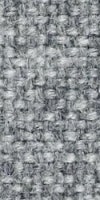The 3D Bar Stool, designed by Komplot Design, was the first furniture design to be based on the innovative technique of moulding three-dimensional veneer. The 3D design gives the bar stool a comfortable seat and a sense of lightness – with all edges pointing away from the user.
With the wide range of seating shells in veneer, in HiRek or fully upholstered, the 3D Bar Stool allows a unique and personal expression for both the private home or restaurant.
Shell Hirek, wood or upholstered shell
Base black matt steel or chrome frame
Version 65 H78 x W44 x D41 cm – Seat height 65 cm
Version 75 H88 x W46 x D43 cm – Seat height 65 cm
Un-unpholstered shell
from
Front upholstered shell
from
Fully upholstered shell
from









magenta / chrome
walnut / black
black / black
Komplot Design

Founded in 1987, Komplot Design, a partnership of the Danish architect Poul Christiansen (born 1947) and the Russian industrial and graphic designer Boris Berlin (born 1953), has designed furniture and created multidisciplinary design solutions for both Danish and international companies, including Le Klint and Lightyears.
"We believe that through design history, many traditions within the field have been preoccupied with the idea of total control over function, form, material and so on. This striving for control of our surroundings is probably a typical urge of Western culture, being both its principal strength and its greatest failing. Instead of fighting against mistakes by forcing the material to behave perfectly (often against its nature), we choose to accept the way the material wants to behave, the way its nature tells it to move…"